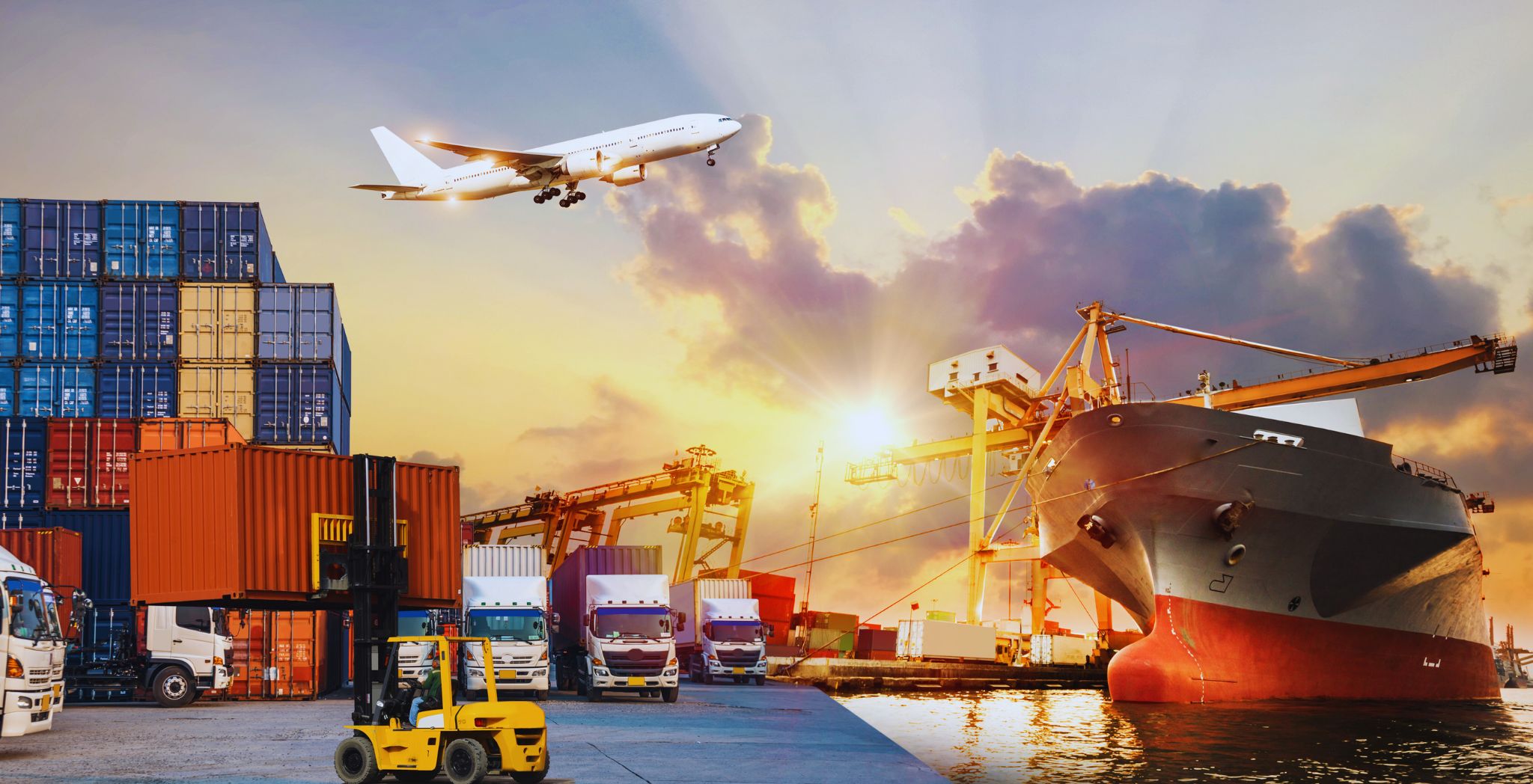In today’s fast-paced global economy, understanding the intricacies of logistics and transportation is crucial for businesses striving for efficiency and sustainability. The terms “logistics” and “transportation” are often used interchangeably, yet they encompass distinct aspects of moving goods from one place to another.
This comprehensive guide will delve into the differences between logistics and transportation, their roles in international transactions, and their interconnection within the industry. By exploring these facets, we aim to highlight the importance of integrating logistics and transportation for enhanced operational efficiency and environmental sustainability.
What is Transport and Logistics?
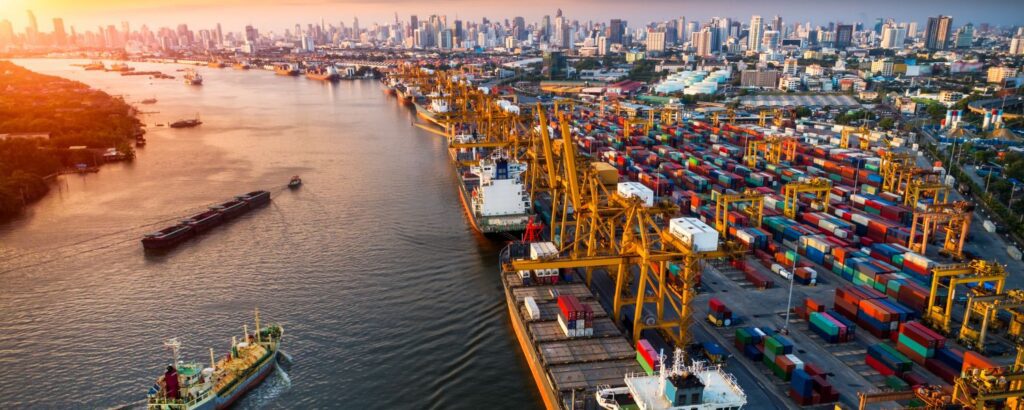
Transport and logistics are two crucial components of the supply chain, each playing distinct yet interconnected roles in the movement and management of goods and services.
Transport
Transport refers to the physical movement of goods or people from one location to another using various modes such as road, rail, air, or sea. It is a fundamental component of the supply chain, ensuring that products reach their destinations efficiently and on time. The logistics and transportation industry relies heavily on effective transport solutions to maintain the flow of goods across regions and borders.
1. Road Transport
Trucks and other vehicles transport goods overland, often used for shorter distances or where different forms of transport could be more practical. Trucking companies are pivotal in moving goods across countries, providing flexible and reliable services tailored to specific logistical needs.
2. Rail Transport
Trains transport large quantities of goods over long distances. Rail transport is incredibly efficient for heavy and bulk items, offering a cost-effective and environmentally friendly alternative to road transport.
3. Air Transport
Aeroplanes are used for fast transportation of goods, particularly over long distances or when time is critical. Airlines play a crucial role in the logistics and transportation industry by enabling global trade and ensuring that perishable or high-value goods reach their destinations quickly.
4. Sea Transport
Ships carry containers and bulk cargo across oceans, handling most international trade by volume. Maritime transport is essential for moving large quantities of goods cost-effectively over long distances, with ports serving as vital hubs in the global supply chain.
Logistics
Logistics, on the other hand, encompasses a broader scope. It involves the planning, implementing, and controlling the efficient flow and storage of goods, services, and related information from the point of origin to the end of consumption.
Logistics integrates transportation into a more extensive system aimed at optimizing the entire supply chain. The logistics and transportation industry depends on sophisticated logistics management to ensure seamless operations and customer satisfaction.
1. Warehousing
Logistics includes the storage of goods in warehouses, where inventory is managed until it is needed. Efficient warehousing solutions help businesses maintain optimal stock levels, reduce holding costs, and improve order fulfilment times.
2. Inventory Management
This aspect of logistics involves tracking and managing stock levels to meet customer demand without overstocking or understocking. Effective inventory management is crucial for minimizing costs and ensuring product availability.
3. Order Fulfillment
Logistics coordinates receiving, processing, and delivering orders to customers. This includes picking, packing, and shipping products, ensuring timely and accurate deliveries.
4. Supply Chain Coordination
Logistics involves synchronizing various activities across the supply chain, from sourcing raw materials to delivering finished products. This requires collaboration with suppliers, manufacturers, and distributors to streamline operations and enhance efficiency.
The Difference Between Logistics and Transportation
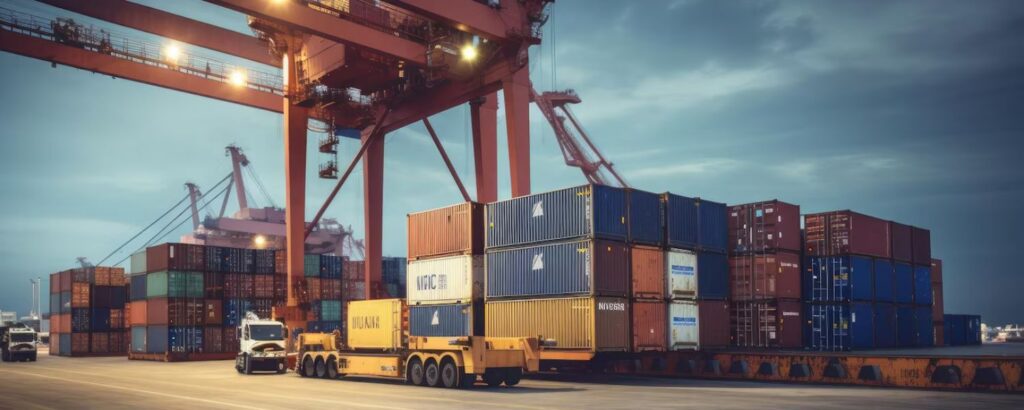
In the logistics and transportation industry, understanding the distinction between logistics and transportation is essential for optimizing operations, reducing costs, and enhancing customer satisfaction. Although the terms are often used interchangeably, they encompass different aspects of the supply chain.
This article delves into the logistics and transportation differences, providing a comprehensive overview to help businesses navigate and integrate these crucial functions effectively.
Scope of Logistics and Transportation
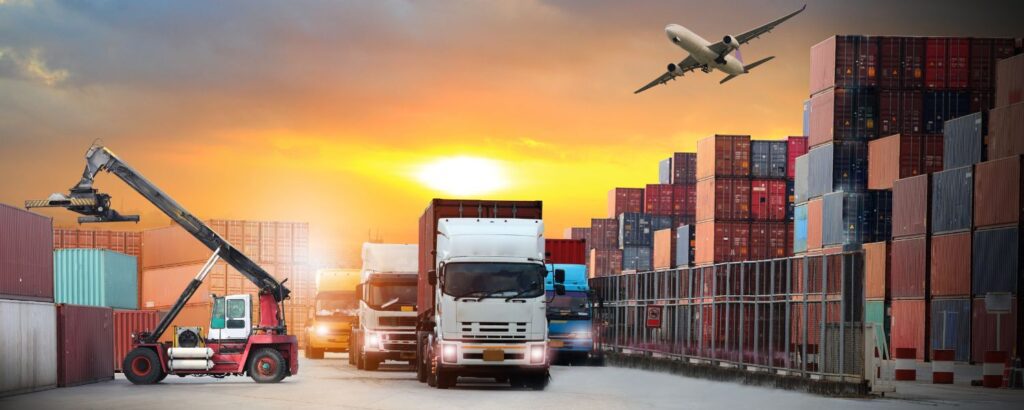
Transportation
Transportation is the movement of goods or people from one location to another using various modes, such as road, rail, air, or sea. It is a fundamental component of the supply chain, ensuring that products reach their destinations efficiently and on time. The logistics and transportation industry relies heavily on effective transport solutions to maintain the flow of goods across regions and borders.
1. Road Transport
Trucks and other vehicles transport goods overland, often used for shorter distances or where other forms of transport are impractical. Trucking companies are pivotal in moving goods across countries, providing flexible and reliable services tailored to specific logistical needs.
2. Rail Transport
Trains are used to transport large quantities of goods over long distances. Rail transport is especially efficient for heavy and bulk items, offering a cost-effective and environmentally friendly alternative to road transport.
3. Air Transport
Aeroplanes are used for the fast transportation of goods, particularly over long distances or when time is a critical factor. Airlines play a crucial role in the logistics and transportation industry by enabling global trade and ensuring that perishable or high-value goods reach their destinations quickly.
4. Sea Transport
Ships carry containers and bulk cargo across oceans, handling the majority of international trade by volume. Maritime transport is essential for moving large quantities of goods cost-effectively over long distances, with ports serving as vital hubs in the global supply chain.
Logistics
Logistics, on the other hand, covers a broader scope. It involves planning, implementing, and controlling the efficient flow and storage of goods, services, and information from origin to consumption. Essentially, logistics integrates transportation into a larger system designed to optimize the entire supply chain and implement carbon footprint solutions.
1. Warehousing
Logistics includes the storage of goods in warehouses, where inventory is managed until it is needed. Efficient warehousing solutions help businesses maintain optimal stock levels, reduce holding costs, and improve order fulfilment times.
2. Inventory Management
This aspect of logistics involves tracking and managing stock levels to meet customer demand without overstocking or understocking. Effective inventory management is crucial for minimizing costs and ensuring product availability.
3. Order Fulfillment
Logistics coordinates the process of receiving, processing, and delivering orders to customers. This includes picking, packing, and shipping products, ensuring timely and accurate deliveries.
4. Supply Chain Coordination
Logistics involves the synchronization of various activities across the supply chain, from sourcing raw materials to delivering finished products. This requires collaboration with suppliers, manufacturers, and distributors to streamline operations and enhance efficiency.
Objectives of Logistics and Transportation
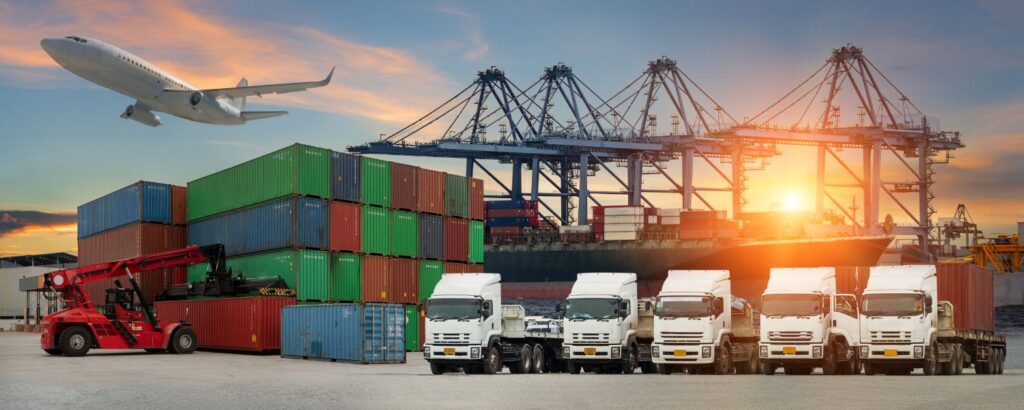
The goals of logistics and transportation highlight their distinct yet complementary roles within the supply chain.
Transportation Objectives
The primary objective of transportation is to move goods efficiently from one location to another. This involves selecting the appropriate mode of transport, optimizing routes, and ensuring timely deliveries. Key transportation logistics examples include:
1. Just-In-Time (JIT) Deliveries
Ensuring that goods arrive exactly when needed to minimize inventory costs and reduce storage requirements.
2. Cold Chain Logistics
Managing the transportation of perishable goods under controlled temperature conditions to maintain product quality and safety.
3. Last-Mile Delivery
The final step in the delivery process is where goods are transported from a distribution centre to the end customer, often requiring high efficiency and speed.
Logistics Objectives
Logistics aims to streamline the entire supply chain to enhance efficiency, reduce costs, and improve customer satisfaction. This involves a holistic approach to managing the flow of goods and information, with specific objectives including:
1. Supply Chain Optimization
Ensuring that all components of the supply chain work together seamlessly to deliver products efficiently and cost-effectively.
2. Inventory Optimization
Balancing inventory levels to meet customer demand while minimizing holding costs and avoiding stockouts.
3. Customer Service Improvement
Enhancing order accuracy, delivery speed, and overall customer experience to build loyalty and drive repeat business.
4. Cost Reduction
Identifying and eliminating inefficiencies across the supply chain to reduce operational costs and improve profitability.
Components of Logistics and Transportation
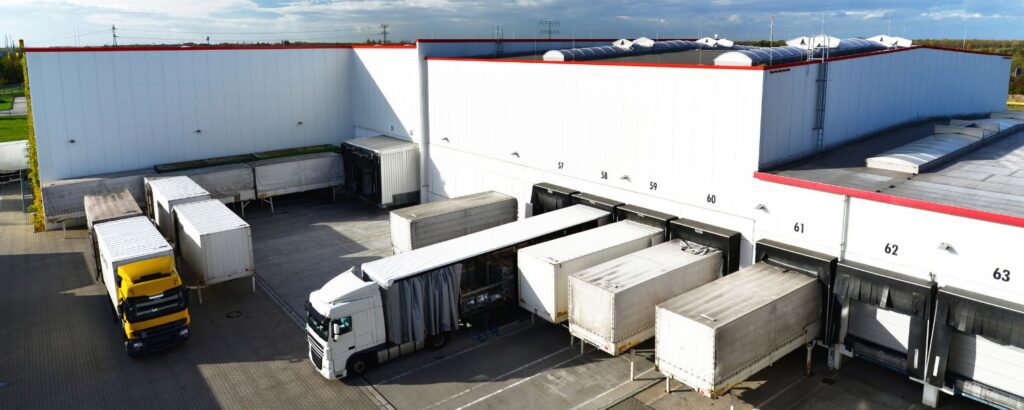
Understanding the components of logistics and transportation helps clarify their roles and how they interact within the logistics and transportation industry.
Transportation Components
Transportation involves several key components, each contributing to the effective movement of goods:
1. Modes of Transport
The various methods used to move goods, including road, rail, air, and sea transport.
2. Transport Infrastructure
The physical facilities that support transportation, such as roads, railways, airports, seaports, and warehouses.
3. Transport Management
The process of planning, executing, and monitoring transportation activities to ensure efficient and timely delivery of goods.
4. Carrier Selection
Choosing the appropriate transport providers based on factors such as cost, reliability, speed, and capacity.
Logistics Components
Logistics encompasses a broader range of components that integrate transportation into a cohesive supply chain management system:
1. Warehousing and Storage
Facilities and systems are used to store goods until they are needed for distribution or sale.
2. Inventory Management
Techniques and systems for tracking and managing stock levels to ensure availability while minimizing excess inventory.
3. Order Processing
The steps involved in receiving, picking, packing, and shipping orders to customers.
4. Supply Chain Integration
Coordinating activities across the supply chain to ensure smooth and efficient operations, from sourcing raw materials to delivering finished products.
5. Information Management
Systems and processes for collecting, storing, and analyzing data to support decision-making and improve supply chain visibility.
How Does Logistics Fit into an International Transaction?
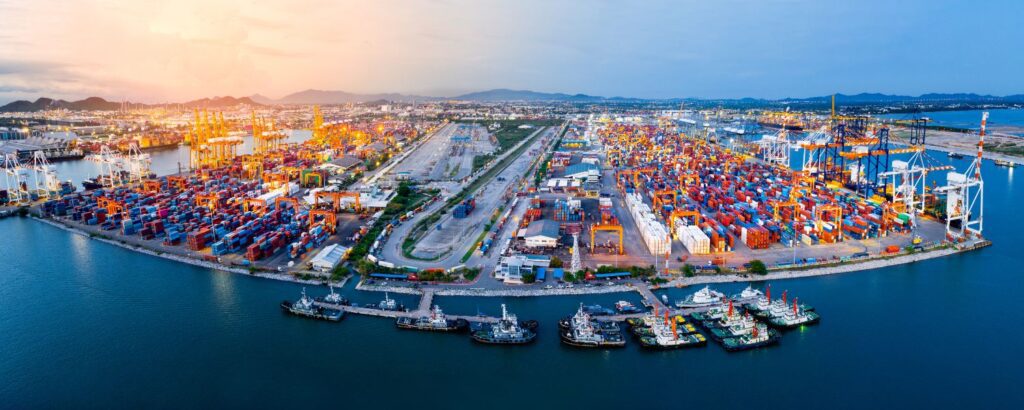
In the context of international transactions, logistics plays a pivotal role in ensuring that goods move seamlessly across borders. Here’s how logistics integrates into the process:
1. Coordination
Logistics involves coordinating with multiple stakeholders, including suppliers, freight forwarders, customs brokers, and carriers, to ensure smooth transit of goods.
2. Documentation
Handling international shipping requires meticulous documentation, including invoices, packing lists, bills of lading, and customs declarations. Logistics professionals manage these documents to avoid delays and compliance issues.
3. Customs Clearance
Navigating customs regulations and procedures is a critical part of international logistics. Effective logistics management ensures that goods clear customs without unnecessary delays.
4. Warehousing and Distribution
Logistics includes warehousing solutions at strategic locations to facilitate efficient distribution once goods reach their destination country.
By efficiently managing these aspects, logistics ensures that international transactions are executed smoothly, minimizing disruptions and maximizing efficiency.
Interconnection and Integration of Logistics and Transportation
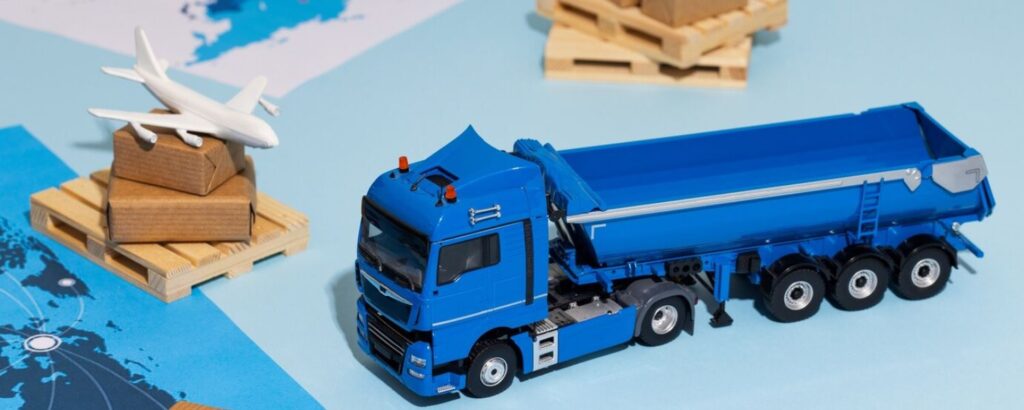
While transportation focuses on moving goods, logistics involves the comprehensive management of the supply chain, including transportation. The logistics and transportation industry thrives on the integration of these two components, leveraging transportation to execute logistics plans and achieve operational goals with sustainable innovation.
1. Transportation as a Function of Logistics
Transportation is a critical function within the logistics framework, responsible for the physical movement of goods. Effective logistics planning ensures that transportation routes are optimized for speed and cost-effectiveness. For example, a logistics company might use data analytics to plan the most efficient routes for transportation, reducing fuel consumption and transit times.
2. Data and Technology Integration
Modern logistics relies heavily on data and technology to optimize transportation. Real-time tracking systems, IoT devices, and AI-enabled analytics provide insights into transportation logistics, helping to improve route planning and fuel efficiency. By integrating technology, businesses can monitor shipments in real time, predict potential disruptions, and make data-driven decisions to enhance overall supply chain performance.
3. Sustainability Goals
Logistics strategies often incorporate sustainability goals, such as reducing carbon footprints. By optimizing transportation routes and modes, logistics can significantly contribute to environmental sustainability. For instance, using electric trucks for short-haul deliveries or choosing more fuel-efficient shipping methods can help reduce greenhouse gas emissions and promote sustainable practices within the logistics and transportation industry.
Importance of Integration

Integrating logistics and transportation is essential for businesses aiming to enhance their operational efficiency and sustainability. Here are some key benefits:
1. Cost Efficiency
Integrated logistics and transportation systems help reduce operational costs by optimizing routes, consolidating shipments, and improving inventory management.
2. Improved Customer Satisfaction
Efficient logistics and transportation ensure timely deliveries, which enhances customer satisfaction and loyalty.
3. Environmental Sustainability
By optimizing logistics processes and transportation modes, businesses can reduce their carbon footprint, contributing to environmental sustainability and meeting regulatory requirements.
4. Real-Time Visibility
Integrated systems provide real-time visibility into the supply chain, allowing businesses to monitor shipments, manage inventories, and respond quickly to any disruptions.
Conclusion
Understanding the logistics and transportation differences is essential for businesses aiming to streamline their operations and achieve sustainability. While transportation focuses on the movement of goods, logistics encompasses a broader scope, including planning, implementation, and control of the entire supply chain. By integrating logistics and transportation, businesses can enhance efficiency, reduce costs, and contribute to environmental sustainability.
VectorGlobe provides innovative solutions tailored to the logistics and transportation industry. Our technology includes IoT devices, AI-enabled data processing, and web applications that offer real-time insights and analytics. These tools are designed to optimize efficiency, improve asset utilization, and reduce carbon emissions, making logistics and transportation operations more effective and environmentally friendly.
Our solutions help businesses manage logistics operations with greater accuracy, from warehousing and inventory management to transportation logistics. With our integrated platform, companies can gain visibility into their operations, allowing for better decision-making and streamlined processes.
By implementing VectorGlobe’s advanced technology, businesses in the logistics and transportation industry can improve cost-efficiency, customer satisfaction, and sustainability. Our focus on practical innovation and environmental responsibility helps our clients meet their operational and sustainability goals, contributing to a more efficient and sustainable future.

